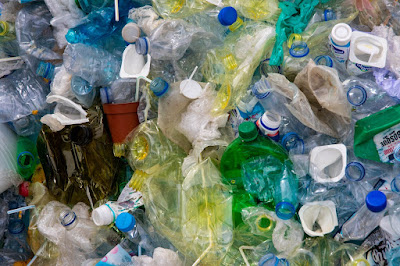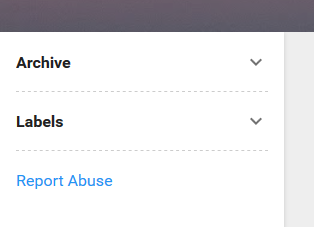How Landfills Work: A Closer Look at Where Our Trash Goes
As we go through our daily lives, we generate a lot of waste.
From food scraps to plastic packaging, we produce a variety of materials that need to be disposed of properly.
But where does all this garbage go? The answer is landfills.
Landfills are designed to safely and efficiently store waste. They are carefully engineered to prevent environmental damage and to minimize the impact on nearby communities.
Let's take a closer look at how landfills work and what happens to our trash once it is taken there.
What is a landfill?
A landfill is a designated area where waste is buried underground. In most cases, a landfill is a large pit or hole in the ground that is lined with an impermeable barrier, such as clay or plastic, to prevent contaminants from seeping into the surrounding soil and groundwater. Garbage is then dumped into the pit and compacted to maximize the amount of space available.
Over time, the landfill grows larger as more waste is added. When the landfill reaches its maximum capacity, it is covered with soil and other materials to prevent pests and other animals from accessing the waste. Once closed, the landfill is monitored to ensure that it does not pose a threat to the environment or public health.
Types of Landfills
There are several types of landfills, each designed to handle different types of waste and to minimize the environmental impact.
Municipal Solid Waste Landfills
Municipal solid waste (MSW) landfills are designed to handle household and commercial waste. They are the most common type of landfill in the United States and are heavily regulated by the Environmental Protection Agency (EPA). MSW landfills must comply with strict guidelines to ensure that they do not pose a threat to human health or the environment.
Industrial Waste Landfills
Industrial waste landfills are designed to handle waste generated by industries, such as chemical plants and factories. These landfills must meet more stringent regulations than MSW landfills because the waste they contain is often hazardous or toxic.
Construction and Demolition Landfills
Construction and demolition (C&D) landfills are designed to handle waste generated by construction and demolition projects. They are usually less regulated than MSW or industrial waste landfills because the waste they contain is not considered hazardous. However, C&D landfills must still meet certain requirements to prevent environmental damage.
How Landfills Work
Landfills are designed to minimize the impact on the environment and to protect nearby communities. Here is a closer look at how landfills work.
Preparing the Landfill Site
Before a landfill can be built, the site must be carefully selected and prepared. The site must be located in an area that is not prone to flooding or other natural disasters, and it must be far enough away from residential areas to minimize the impact on nearby communities.
Once a site has been selected, it is prepared by clearing the land and compacting the soil. The site is then lined with an impermeable barrier, such as clay or plastic, to prevent contaminants from seeping into the surrounding soil and groundwater.
Dumping the Waste
Once the landfill site has been prepared, waste can be dumped into the pit. Garbage trucks back up to the edge of the pit and dump their contents, which are then spread out and compacted by heavy machinery. This process is repeated until the landfill reaches its maximum capacity.
Managing the Waste
Once the waste has been dumped into the landfill, it is managed to prevent environmental damage. This includes:
- Covering the waste: Once a layer of waste has been dumped into the landfill, it is covered with soil or other materials to prevent pests and other animals from accessing the garbage.
- Managing methane gas: As the waste in the landfill decomposes, it releases methane gas. This gas is highly flammable and can be dangerous if it accumulates in large quantities. To manage this, many landfills have a system in place to collect and burn the methane gas. This process, known as landfill gas-to-energy, can be used to generate electricity or heat.
- Monitoring the landfill: Landfills must be monitored regularly to ensure that they do not pose a threat to the environment or public health. This includes monitoring the levels of methane gas and other pollutants, as well as checking the integrity of the impermeable barrier.
- Managing leachate: Leachate is a liquid that is created when water comes into contact with waste in the landfill. This liquid can contain a variety of contaminants, including heavy metals and chemicals. To prevent leachate from contaminating the surrounding soil and groundwater, many landfills have a system in place to collect and treat the leachate.
Closing the Landfill
Once the landfill reaches its maximum capacity, it is closed and covered with soil and other materials to prevent pests and other animals from accessing the waste. The site is then monitored for several years to ensure that it does not pose a threat to the environment or public health.
Environmental Concerns
While landfills are designed to minimize the impact on the environment, they still pose several environmental concerns.
One of the biggest concerns is the production of methane gas. Methane is a potent greenhouse gas that contributes to climate change. Landfills are one of the largest sources of human-caused methane emissions in the United States.
Another concern is the potential for contamination of soil and groundwater. Landfills can release a variety of pollutants, including heavy metals, chemicals, and other toxic substances. These pollutants can leach into the surrounding soil and groundwater, potentially contaminating nearby water sources.
Landfills can also have a negative impact on nearby communities. The smell of garbage and the noise from heavy machinery can be disruptive, and some residents may be concerned about the potential health effects of living near a landfill.
Let's Sum It Up
Landfills are an important part of our waste management infrastructure. They are carefully designed to minimize the impact on the environment and to protect nearby communities. While they do pose several environmental concerns, they are still the most common method of waste disposal in the United States.
As individuals, we can help reduce the amount of waste that ends up in landfills by recycling, composting, and reducing our overall consumption. By working together, we can create a more sustainable future for ourselves and for the planet.
(The image source is https://www.pexels.com/photo/drone-shot-of-landfill-3186574/ )




Comments
Post a Comment